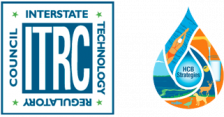Appendix F. Acronyms
ADDA (2S,3S,8S,9S)-3-amino-9-methoxy-2,6,8-trimethyl-10-phenyldeca-4,6-dienoic acid
ANSI American National Standards Institute
ASDWA Association of State Drinking Water Administrators
ATX anatoxin-a
AWWA/WRF American Water Works Association/Water Research Foundation
BAP biologically available phosphorus
BMAA beta-methylamino-L-alanine
CCHAB California Cyanobacteria and Harmful Algal Bloom Network
CDC Centers for Disease Control and Prevention
CYL cylindrospermopsin
DBL diffuse boundary layer
dhATX dihydroanatoxin-a
DIN dissolved inorganic nitrogen
DNA deoxyribonuclic acid
DRP dissolved reactive phosphorus
ECOS Environmental Council of the States
ELISA enzyme-linked immunosorbent assay
EPS extracellular polymeric substances
ESA Endangered Species Act
FAO Food and Agriculture Organization
FDA U.S. Food and Drug Administration
HAB harmful algal bloom
HCB harmful cyanobacterial bloom
HPLC-MS high-performance liquid chromatography-mass spectrometry
HTX homoanatoxin-a
ITRC Interstate Technology and Regulatory Council
LC-MS liquid chromatography-mass spectrometry
LC-MS/MS liquid chromatography-tandem mass spectrometry
LCRA Lower Colorado River Authority
LWTX Lyngbya wollei toxin
MCY microcystin
NALMS North American Lake Management Society
NAWQA National Water-Quality Assessment
NEON National Ecological Observatory Network
NGO nongovernmental agency
NOD nodularin
NPS National Park Service
NRC National Research Council
NSF National Sanitary Foundation
OEHHA Office of Environmental Health Hazard Assessment
PCR polymerase chain reaction
PMAV provisional maximum acceptable values
PTOX potentially toxigenic
PVC polyvinyl chloride
PWS public water system
RFU relative fluorescence units
SCUBA self-contained underwater breathing apparatus
SPATT solid phase absorption toxin tracking
STX saxitoxin
SWAMP Surface Water Ambient Monitoring Program
TDI tolerable daily intake
TEF toxic equivalency factor
TMDL total maximum daily load
UDEQ Utah Department of Environmental Quality
USACE United States Army Corps of Engineers
USEPA United States Environmental Protection Agency
USFWS United States Fish and Wildlife Service
USGS United States Geologic Survey
UV ultraviolet
WHO World Health Organization
WQS water quality standard


